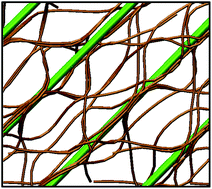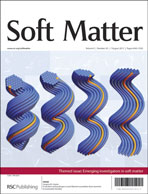Trees and other woody plants are hierarchically structured to achieve a wide range of mechanical properties—necessary for their survival under various and varying loading conditions—with a narrow range of chemical composition. The hierarchical level understood to be directly responsible for modulating the longitudinal elastic modulus and yielding behavior is that of the composition of the cell walls, which consists of crystalline cellulose fibrils embedded in an amorphous matrix of hemicellulose and lignin. Here we report a simple coarse-grained model of the cellulose fibrils and hemicellulose chains to provide a bottom-up description of the mechanics. We identify the mechanical behaviors for varying fibril angles, plot force–strain relationships and compare the data with experimental results and theoretical predictions, providing insight into fundamental structure–property relations of wood. Our model shows that hemicellulose deforms in a stick-slip motion as the fibrils shear, resulting in permanent deformation without causing material damage, and leading to the characteristic softening of wood as deformation is increased. The main contribution of this work is the development of a model that can be fine-tuned and adapted to other applications. While it presents simple formulation, it can successfully describe several key phenomena, specifically the three regimes of mechanical behavior: elastic, plastic, and high-strain stiffening, as well as the dependence of modulus on the microfibril angle, and as such provides a bottom-up mechanistic approach to wood mechanics.

You have access to this article
 Please wait while we load your content...
Something went wrong. Try again?
Please wait while we load your content...
Something went wrong. Try again?


 Please wait while we load your content...
Please wait while we load your content...